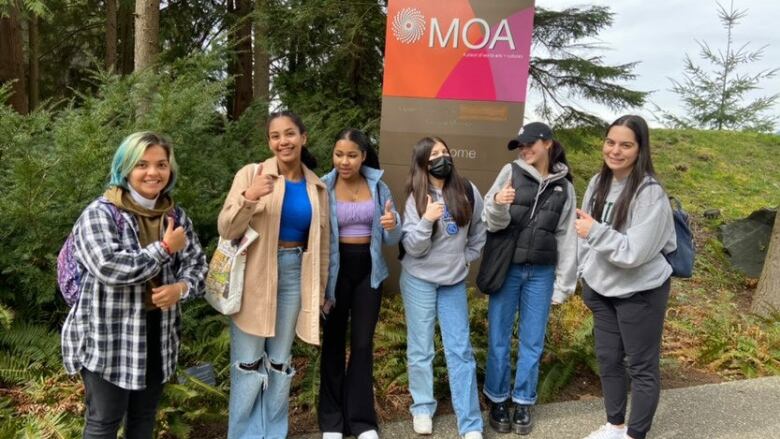Anti-racism club at Vancouver Island high school creates safe space for students of colour
Ladysmith Secondary students revived Students Taking Action Against Racism, originally founded in mid-2000s

WARNING: This story contains details of experiences of racismand may affect those who have experienced racist or discriminatory incidents, or know someone who has.
A group of studentsat Ladysmith Secondary School in B.C. are starting important discussions aboutracism,and creating a space where students of colour can feel comfortable talking about their experiences and challenges in the predominantly white school.
Students Taking Action Against Racism (STAAR) was originally founded in the mid-2000s by a group of teachers and students at Ladysmith Secondary School (LSS) in Vancouver Island, before it was dissolveddue to a lack of interest.
In 2020, six students and three teachers decided to revive STAAR as a way to educate students about racism and social justice, saidGrade 11 studentTJ Nyhan.
"I was looking atthe curriculum and how we could add more education around racism," Nyhan told On the IslandhostGregor Craigieearlier this month.
Social studies teacher Stefania Rosiorusaidshe wanted to help revivethe club to provide a space for students to discuss topics like anti-Asian violence andthe death of George Floyd.
"I got a letter from a previous grad advocating for a safe space to exist to talk about what happened," said Rosioru.
"It started as kind of a place for our BIPOC students to come and have a safe space ... but the school is predominantly white ... so the students thought there was a need for activism as well."
The group has made a six-minute video where members shared their experiences of racism at the school, said Nyhan.
"That was I think the biggest project that we've done so far and it probably had the most impact," she said.
"If we don't address instances of racism in schools in a way that uphold accountability, education and recovery, we perpetuate a system of ignorance and racism-based trauma."
According to the Ontario Human Rights Commission, subtle discrimination is oneof the most common ways BIPOC Canadians(Black, Indigenous and people of colour)experience unequal treatment.
In thevideo, a Grenadian Canadian student shared what it felt like to be called the N-word by another student in front of schoolmates.
"The one response out of 28 kids was, "Well you're not even that Black, so why does it matter?"' she said in the video.
Another student recalled a time when he jumped over a fence while playing with friends at LSS, when someone made a comment about the colour of his skin.
"I unfortunately had to face a traumatic event which still to this day, has stuck with me," he said.
Rosioru saidtheclubhas become a place where students of colourcan feel like their voices are being heard and understood by peers who have had similar experiences.
"I'm a white woman and sometimes our students of colour don't want to come up to like a middle-aged white woman to telltheir problems to," said Rosioru.
"So we decided this is something our school needs. There needs to be a place where studentscan vent, problem-solve and learn how to be advocates."
With files from Sonya Hartwig and On the Island












_(720p).jpg)


 OFFICIAL HD MUSIC VIDEO.jpg)
.jpg)



























































































